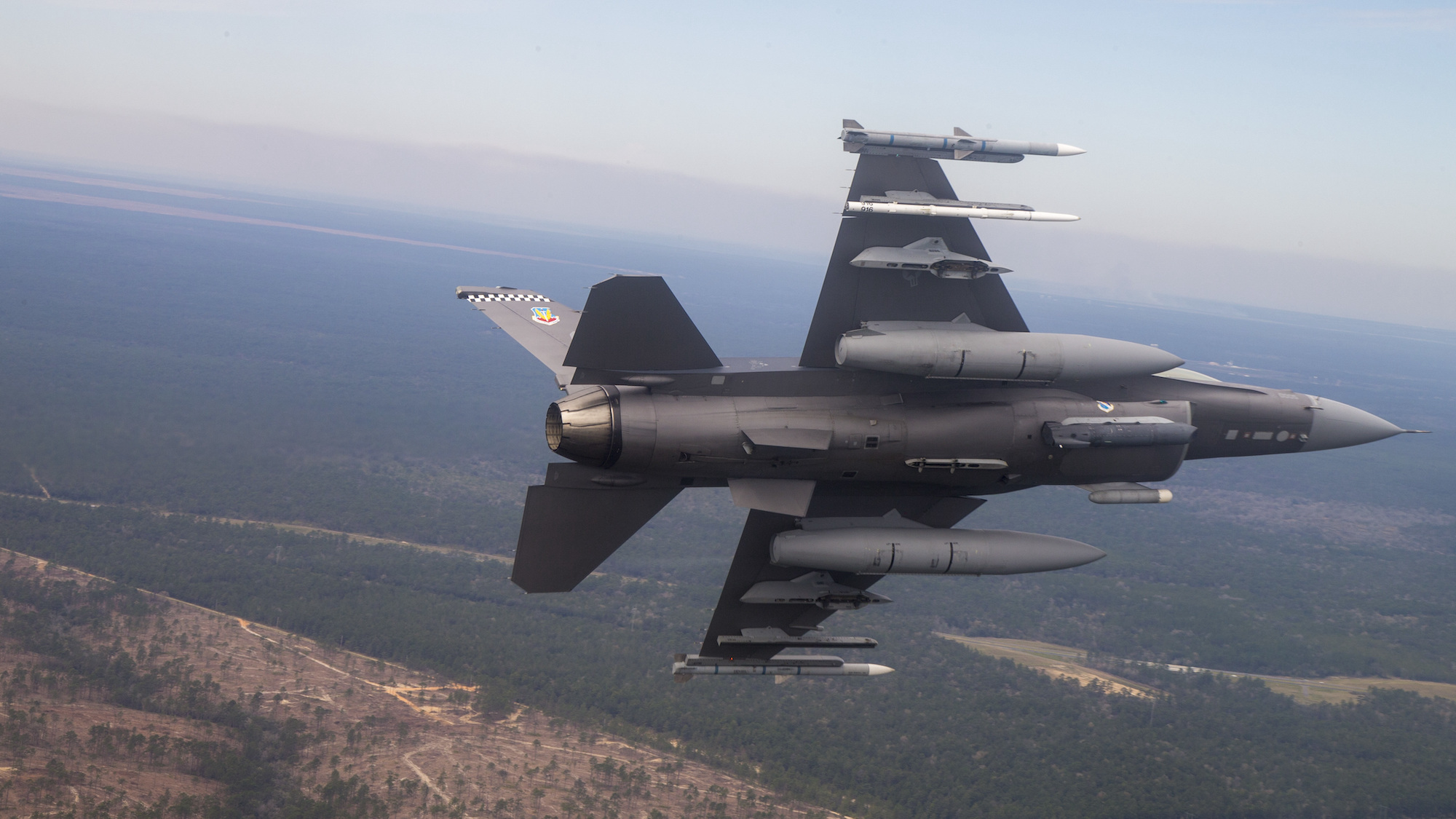

In the future, the US Air Force may employ drones that can accompany advanced fighter jets like the F-35, cruising along as fellow travelers. The vision for these drones is that they would be robotic wingmates, with perhaps two assigned to one F-35, a jet that’s operated by a single pilot. They would act as force multipliers for the aircraft that has a human in it, and would be able to execute tasks like dogfighting. The official term for these uncrewed machines is Collaborative Combat Aircraft, and the Air Force is thinking about acquiring them in bulk: It has said it would like to have 1,000 of them.
To develop uncrewed aircraft like these, though, the military needs to be able to rely on autonomy software that can operate a combat drone just as effectively as a human would pilot a fighter jet, if not more so. A stepping stone to get there is an initiative called VENOM, and it will involve converting around a half dozen F-16s to be able to operate autonomously, albeit with a human in the cockpit as a supervisor.
VENOM, of course, is an acronym. It stands for Viper Experimentation and Next-gen Operations Model, with “Viper” being a common nickname for the F-16 Fighting Falcon, a highly maneuverable fighter jet.
The VENOM program is about testing out autonomy on an F-16 that is “combat capable,” says Lt. Col. Robert Waller, the commander of the 40th Flight Test Squadron at Eglin Air Force Base in Florida.
“We’re taking a combat F-16 and converting that into an autonomy flying testbed,” Waller adds. “We want to do what we call combat autonomy, and that is the air vehicle with associated weapons systems—radar, advanced electronic warfare capabilities, and the ability to integrate weapons—so you loop all of that together into one flying testbed.”
The program builds on other efforts. A notable related initiative involved a special aircraft called VISTA, or the X-62A. Last year, AI algorithms from both DARPA and the Air Force Research Laboratory took the controls of that unique F-16D, which is a flying testbed with space for two aviators in it.
[Related: Why DARPA put AI at the controls of a fighter jet]
The VENOM program will involve testing “additional capabilities that you cannot test on VISTA,” Waller says. “We now want to actually transition that [work from VISTA] to platforms with real combat capabilities, to see how those autonomy agents now operate with real systems instead of simulated systems.”
At a recent panel discussion at the Mitchell Institute for Aerospace Studies that touched on this topic, Air Force Maj. Gen. Evan Dertien said that VENOM is “the next evolution into scaling up what autonomy can do,” building on VISTA. Popular Science sibling website The War Zone reported on this topic last month.
The project will see them using “about six” aircraft to test out the autonomy features, Waller tells PopSci, although the exact number hasn’t been determined, and neither has the exact model F-16 to get the autonomy features. “If we want the most cutting-edge radar or [electronic warfare] capabilities, then those will need to be integrated to an F-16C,” Waller says, referring to an F-16 model that seats just one person.
The role of the human aviator in the cockpit of an F-16 that is testing out these autonomous capabilities is two-fold, Waller explains. The first is to be a “safety observer to ensure that the airplanes always return home, and that the autonomy agent doesn’t do anything unintended,” he notes. The second piece is to be “evaluating system performance.” In other words, to check out if the autonomy agent is doing a good job.
Waller stresses that the human will have veto power over what the plane does. “These platforms, as flying testbeds, can and will let an autonomy agent fly the aircraft, and execute combat-related skills,” he says. “That pilot is in total control of the air vehicle, with the ability to turn off everything, to include the autonomy agent from flying anything, or executing anything.”
Defense News notes that the Air Force is proposing almost $50 million for this project for the fiscal year 2024.
“These airplanes will generally fly without combat loads—so no missiles, no bullets—[and] most, if not all of this, will be simulated capabilities, with a human that can turn off that capability at any time,” Waller says.
Ultimately, the plan is not to develop F-16s that can fly themselves in combat without a human on board, but instead to keep developing the autonomy technology so it could someday operate a drone that can act like a fighter jet and accompany other aircraft piloted by people.
Hear more about VENOM below, beginning around the 42 minute mark:

